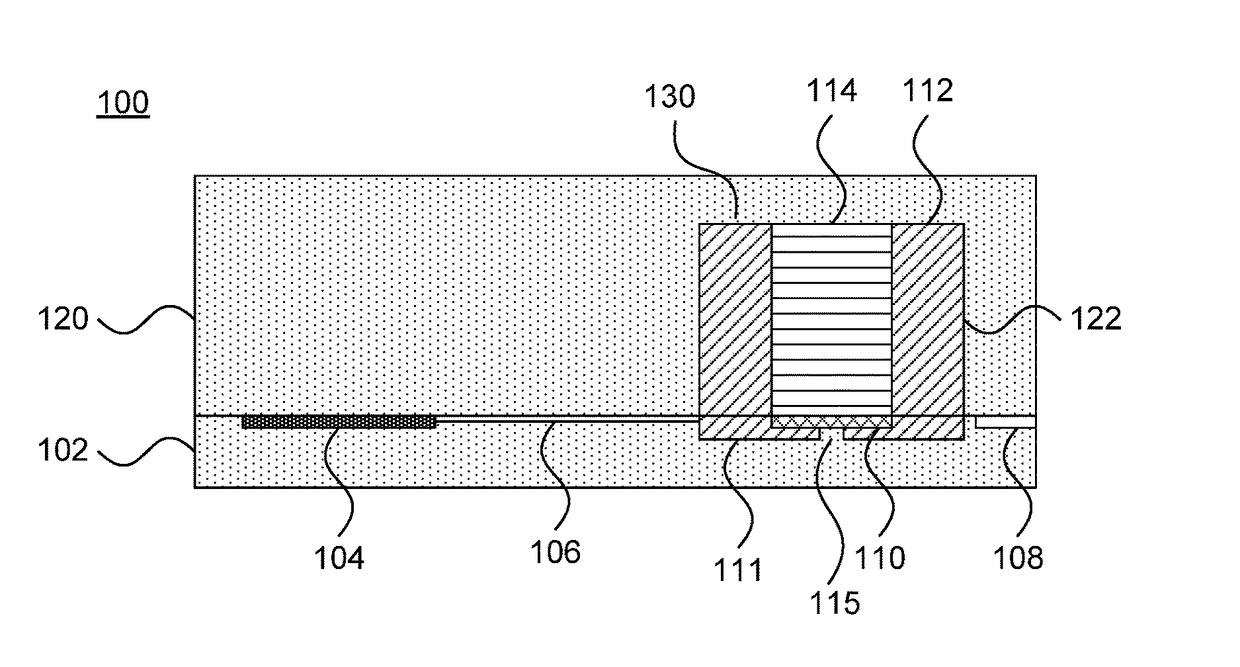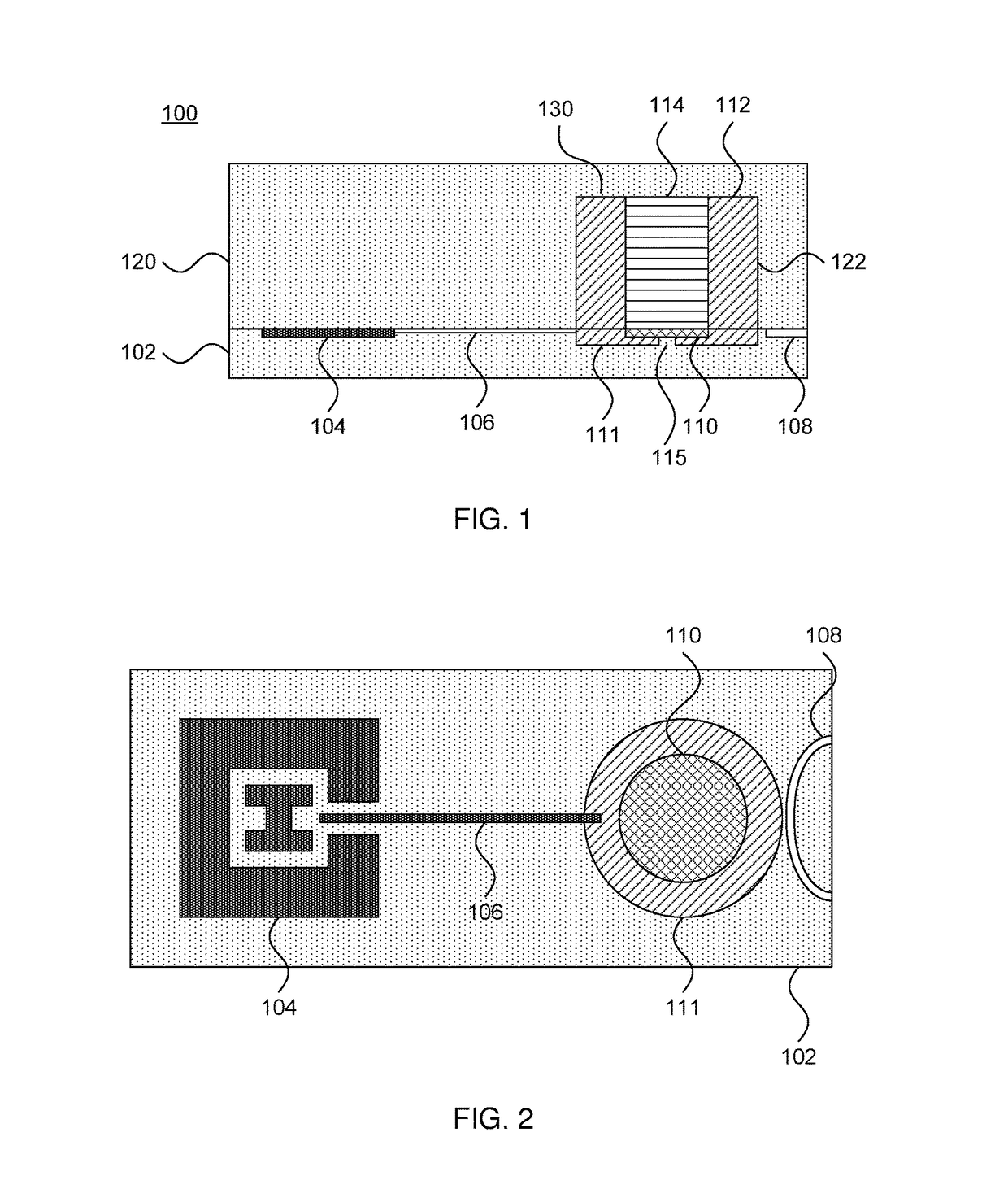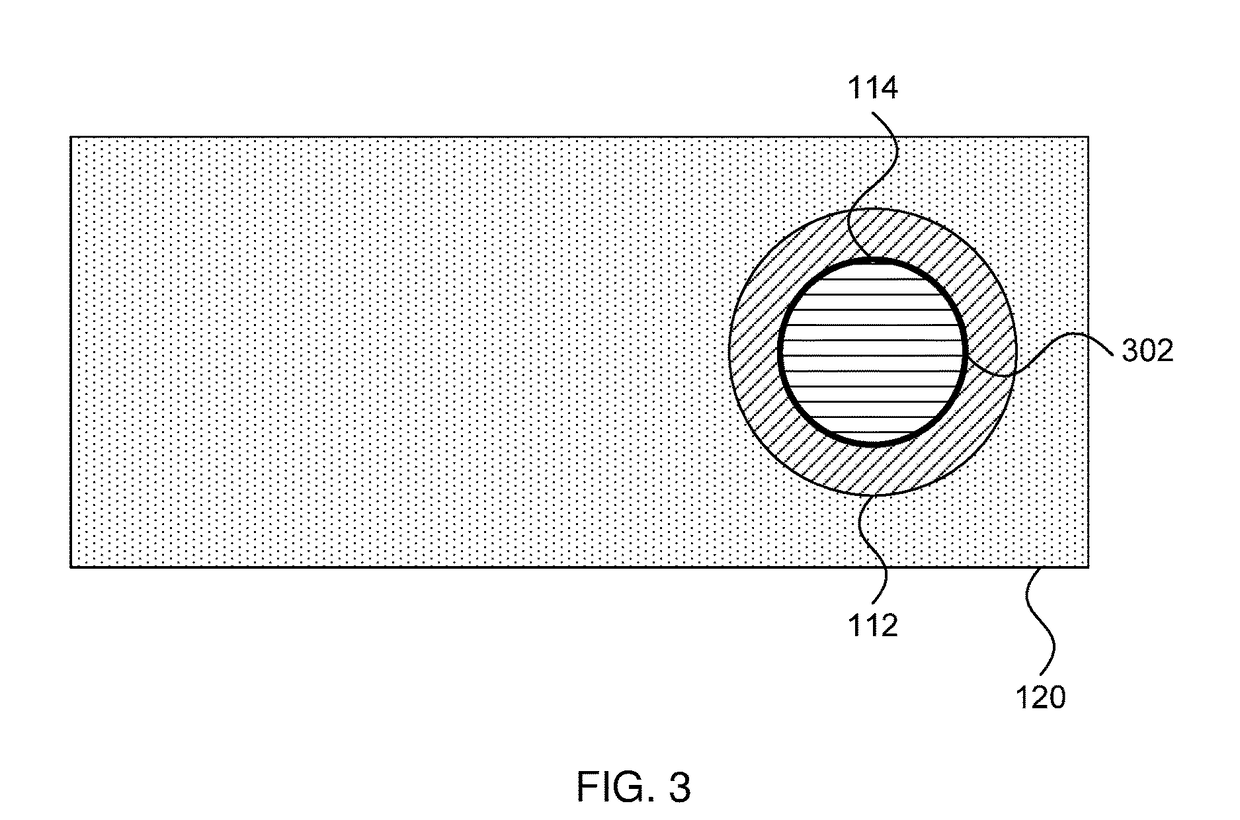Integrated microwave-to-optical single-photon transducer with strain-induced electro-optic material
a single-photon transducer and optical technology, applied in the field of conversion, can solve the problems of complex existing methods for converting between microwave signals and optical signals, difficult implementation in solid-state systems, and more difficult use of microwave photons for long-range communication purposes
- Summary
- Abstract
- Description
- Claims
- Application Information
AI Technical Summary
Benefits of technology
Problems solved by technology
Method used
Image
Examples
Embodiment Construction
[0020]Embodiments of the present invention provide coupling between single-photon microwave signals and single-photon infrared / optical signals via the electro-optic effect using superconducting microwave and optical cavities. Each cavity incorporates an electro-optic material, with the electro-optic effect being induced by a straining material. Coupling takes place at the quantum level, with signal levels being about a single photon. The present embodiments may be implemented on one chip that may be fabricated using standard semiconductor fabrication processes.
[0021]Referring now to the drawings in which like numerals represent the same or similar elements and initially to FIG. 1, a cross-sectional view of a microwave-to-optical transducer 100 is shown. A bottom substrate 102 is shown as having, e.g., a quantum computing device 104 (a “qubit”) that provides, e.g., single-photon level microwave signals along a superconducting channel 106 to a transducing cavity 130. It is specificall...
PUM
 Login to View More
Login to View More Abstract
Description
Claims
Application Information
 Login to View More
Login to View More - R&D
- Intellectual Property
- Life Sciences
- Materials
- Tech Scout
- Unparalleled Data Quality
- Higher Quality Content
- 60% Fewer Hallucinations
Browse by: Latest US Patents, China's latest patents, Technical Efficacy Thesaurus, Application Domain, Technology Topic, Popular Technical Reports.
© 2025 PatSnap. All rights reserved.Legal|Privacy policy|Modern Slavery Act Transparency Statement|Sitemap|About US| Contact US: help@patsnap.com



